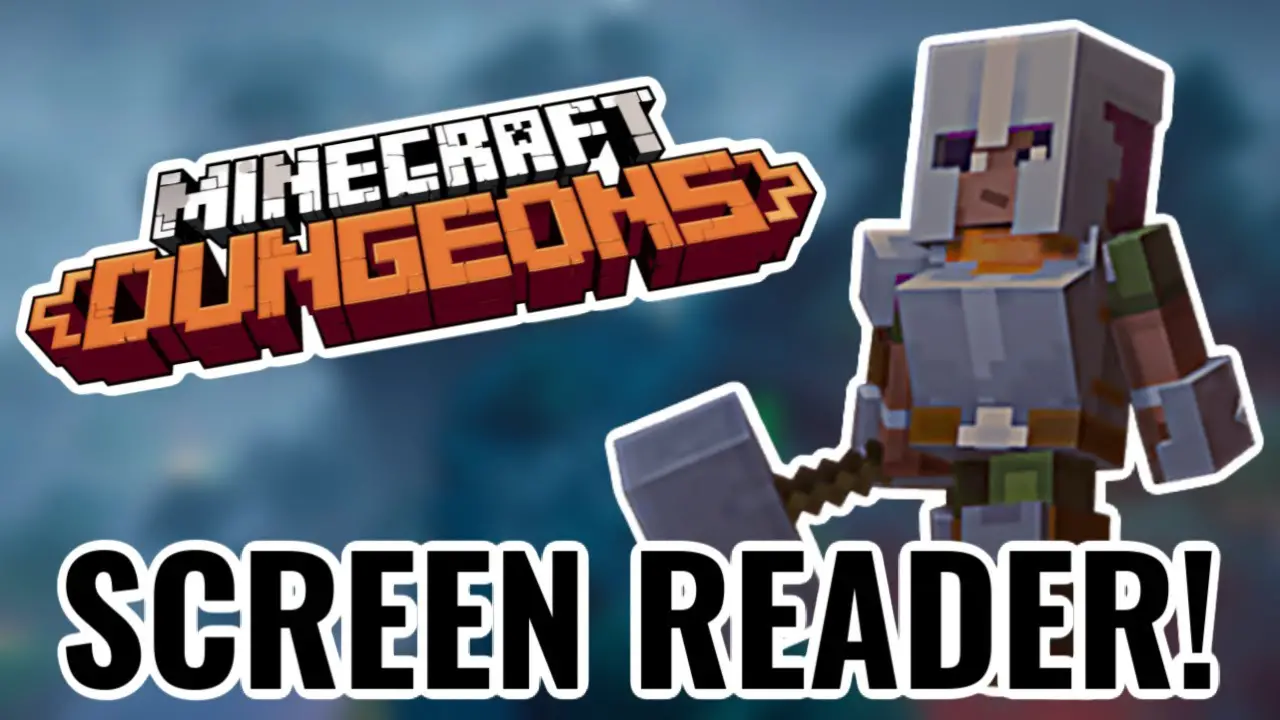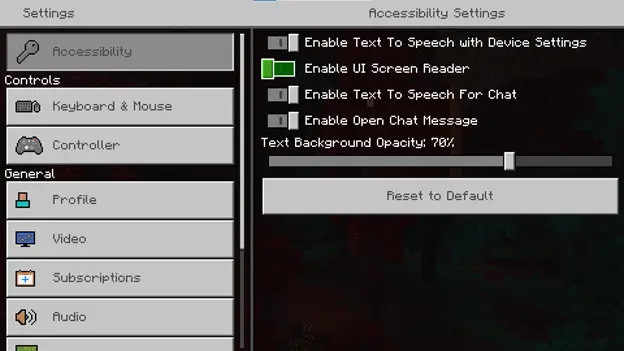Minecraft and Accessibility: Making Gaming Inclusive

The world of video games is vast and ever-evolving, but for many people with disabilities, it can be a challenging and inaccessible landscape. Minecraft, however, stands out as a beacon of inclusivity, offering a customizable and adaptable gaming experience that caters to a wide range of abilities.

Customizable Controls and User Interface:

Minecraft’s control scheme is highly customizable, allowing players to remap keys and actions to suit their specific needs. This flexibility extends to the user interface, where elements can be enlarged, simplified, or repositioned to enhance visibility and ease of use.
Inclusive Multiplayer Experience:
Minecraft’s multiplayer mode is a testament to its commitment to accessibility. Players can connect and collaborate with others, regardless of their abilities. The game’s chat system features text-to-speech and speech-to-text options, enabling verbal communication for those who may struggle with typing.
Accessible Gameplay Mechanics:
Minecraft’s gameplay mechanics are designed to be inclusive and accommodating. Breaking blocks, mining resources, and crafting items can be performed with a variety of methods, including click-to-mine, hold-to-mine, or even using assistive devices.
Visual and Auditory Aids:
For players with visual impairments, Minecraft offers a range of options to enhance their experience. Colorblind modes provide alternative color palettes, while high-contrast textures make it easier to distinguish between objects. Audio cues can also be enabled to provide feedback on actions and events.
Community Support:
The Minecraft community is renowned for its supportive and welcoming atmosphere. Numerous resources, such as accessible texture packs, mods, and tutorials, are created and shared by players to further enhance the game’s accessibility.
Educational and Therapeutic Applications:
Beyond entertainment, Minecraft has also found applications in education and therapy. Its open-ended gameplay and creative potential provide a platform for learning, collaboration, and self-expression. Minecraft has been used to teach subjects like math, science, and history, while also serving as a therapeutic tool for individuals with autism, dyslexia, and other challenges.
Conclusion:
Minecraft stands as a shining example of inclusivity in the gaming world. Its highly customizable controls, accessible multiplayer experience, and visual and auditory aids make it a welcoming space for players of all abilities. The game’s supportive community and its potential for educational and therapeutic applications further solidify its position as a trailblazer in accessible gaming.## Minecraft and Accessibility: Making Gaming Inclusive
Executive Summary
Minecraft, a widely renowned sandbox game, captivates players with its boundless creativity and immersive gameplay. Its diverse accessibility options set it apart as a pioneer in inclusive gaming, empowering individuals with varying abilities to embark on extraordinary adventures. The game’s customizable settings cater to a wide range of sensory and motor impairments, creating an environment where every player can thrive and experience the joy of exploration.
Introduction
The realm of video games has long been recognized for its captivating narratives, intricate challenges, and potential for social interaction. However, for individuals with disabilities, gaming experiences can often be hindered by inaccessible design elements. Minecraft stands as a shining example of how inclusivity can be seamlessly integrated into the gaming experience. Its broad spectrum of accessibility features allows players to tailor the game to their specific needs, enabling them to fully engage with the virtual world and surmount the challenges it presents.
Subtopics
-
Adjustable Difficulty:
- Players can select difficulty levels that suit their skill level and preferences.
- Difficulty settings impact mob behavior, resources availability, and environmental hazards.
- Customizable difficulty allows players to progress at their own pace and enjoy the game without feeling overwhelmed.
-
Sensory Settings:
- Adjustable volume levels accommodate players with hearing impairments.
- Visual aids, such as subtitles and colorblind modes, enhance the gaming experience for players with visual impairments.
- Minecraft’s sensory settings ensure that every player can perceive and interpret game elements effectively.
-
Control Customization:
- Remapping controls allows players to use setups that align with their physical abilities.
- Customizable sensitivity settings offer precise control over character movement and actions.
- Control customization empowers players to find an input method that feels natural and comfortable.
-
Immersive Gameplay:
- Minecraft’s open-ended gameplay encourages creativity and problem-solving.
- Players can engage in various activities, such as building, exploring, crafting, and farming, according to their interests.
- The immersive gameplay experience fosters a sense of accomplishment and engagement for players of all abilities.
-
Community Support:
- Minecraft’s thriving community actively supports accessibility initiatives.
- Modders and content creators develop accessible resource packs, mods, and maps.
- Online communities provide platforms for players to share tips, strategies, and support.
Conclusion
To many, gaming represents a universe of excitement, imagination, and shared experiences. But for individuals with disabilities, it can be a realm of exclusion. Minecraft shatters these barriers with its comprehensive accessibility features, bridging the gap between abilities and creating a truly inclusive gaming environment. Its commitment to inclusivity sets a remarkable precedent for the gaming industry, demonstrating that accessible design and captivating gameplay can coexist harmoniously.
Keyword Phrase Tags
- Minecraft accessibility
- Gaming for disabilities
- Inclusive game design
- Customizable difficulty levels
- Sensory and control customization

Hey! So happy to see such a great blog post article on Minecraft & accessibility/inclusivity. This is a really important topic and I’ll definetely tell more people on my server. Thanks for such a well written article.
This is dumb really. Lol they thinking of just noobs. Real Minecraft pros use every possible advantage they possibly can, not using these features if u want to be rekt xD
This guide is useful! I didn’t know that there were so many accessibility features in Minecraft. I’ll be sure to check them out and see if they can help me improve my gameplay.
You can’t fix stupid, if you need these features than you should play on peaceful.
Wel great, now all the noobs can beat me because they get all this help lol. XD
This is the dumbest article I’ve ever read. Minecraft is already a niche game, you don’t need to make it easier smh. Pathetic!
If you need “features” to play Minecraft then you should go play Roblox or something lol. Minecraft is all about being hardcore and good at skills unlike this stuff. :/
Hypixel sweats on suicide watch as Minecraft becomes too inclusive. RIP skill issue.
Minecraft and accessibility? Don’t make me laugh. What’s next, Fortnite with aimbot? Pathetic! Real gamers don’t need no accessibility features. Stop crying and get good or leave tbh lol.